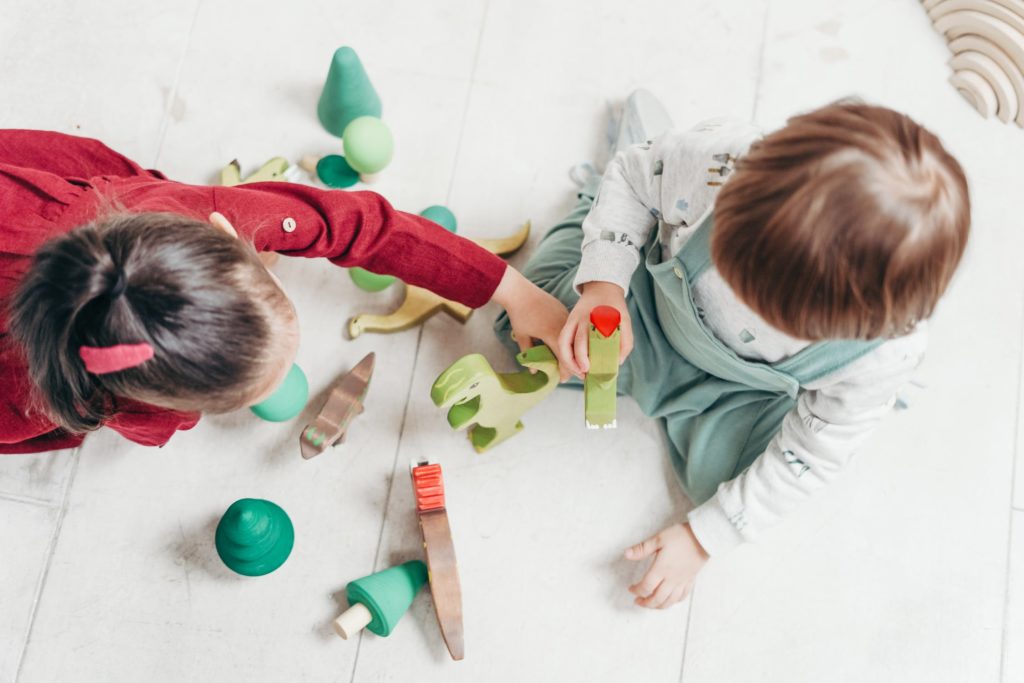The best thing about parenting is watching your child grow and learn. But sometimes, all the early mornings, late nights, dirty diapers, and crying can make it tough to keep up with everything that goes into raising a baby. So if you feel like there’s not enough time in the day to stimulate your child at home, this blog post is for you! 
Photo by cottonbro from Pexels
#1 Give them puzzles
Puzzles are an excellent stimulating activity to keep your little one’s mind active while they’re at home. When babies play with puzzles, it stimulates their brains and helps them develop hand-eye coordination. Don’t have a puzzle? Set up household items in front of babies so that they’ll learn how to stack things from the most simple (i.e., blocks or books) to more complex objects like silverware or clothespins!
As you set these up for the baby, point out each item as you go along – talk about what color it is, whether it has thin pieces on the bottom or not, etc. This will help stimulate your child in both their hearing and speaking skills! If you want a specific puzzle toy for your child but don’t want to spend money, try using a muffin tin and putting items inside each compartment; this will help with their motor skills as they learn how to pick up small objects.
#2 Put on educational shows on the television
When it’s time for their turn with the tv, try putting on educational shows for your little one to watch. This will help them learn new words and understand the ones they’ve already learned. If you can’t find a show that interests both you and your baby, be a good example! Read books with your child if they’re too young to read or look at picture books together while pointing out some of the objects in each scene.
The more exposure babies get to language, the easier it will be for them when learning how to speak themselves down the road! It’s never too early to start talking about what familiar things are around you – whether it’s something as simple as their teddy bear or blanket or an item from outside trees or cars passing by through the window, your child will learn a lot from listening to you.
#3 Encourage them to learn an instrument
For older children, learning how to play an instrument is an excellent way to stimulate your child and for them to express themselves. So even if they’re not ready for formal lessons quite yet, introduce your child to instruments like drums and maracas as early as possible so that by the time they are of age for those sorts of activities, they’ll already be familiar with what it takes!
Although you might worry that having the television on or music playing is distracting for your child, studies have shown this isn’t true. In fact, allowing children to listen to some sort of noise while they’re doing their homework can actually help them concentrate better!
#4 Ask them questions
Asking your child questions is a great way to see how they’re processing what’s going on around them; when you ask “why” or “how,” babies and toddlers learn problem-solving skills (i.e., figuring out why something happened) while also learning the language – you can learn more here! As always, make sure not to lead the question; let them come up with an answer themselves before helping if needed. If there aren’t any words that come immediately to mind, encourage younger children by giving hints like: “is it big?” or point at pictures in books and magazines together as you name objects for babies.
#5 Let them paint or draw
Art is another great way for children to express themselves. Encourage older babies and toddlers to paint or draw (depending on their age/ability) with either crayons, colored pencils, or watercolors! If they’re still working on grasping the items by themselves, place a sheet of paper in front of them while you hold onto the item being used so that it’s closer to your child until they’ve developed control over how much pressure they use when painting.
For younger babies who aren’t quite ready for art supplies just yet? Give them washable markers and allow them to color all over anything from plain white paper towel rolls or toilet paper tubes up through walls or even furniture! You can also try giving baby sponges dipped in paint and let them have fun “painting” the wall. Not only is this a great way for your child to explore different textures, but it’s also easy (and inexpensive) to clean up when you’re done!
P.S. This post contains affiliate links.

